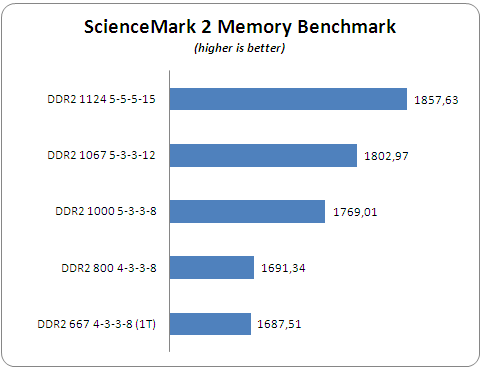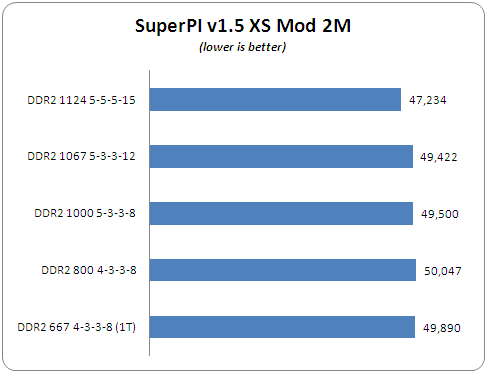1. Introduction
 Founded in 1994, Mushkin is best known for producing “Enhanced” memory modules. Located at the base of the Rocky Mountains in Denver, Colorado, Mushkin provides performance enhanced computer products to users worldwide. Exceptional quality, enhanced performance and unparalleled customer support are what make Mushkin products the best in the industry.
Founded in 1994, Mushkin is best known for producing “Enhanced” memory modules. Located at the base of the Rocky Mountains in Denver, Colorado, Mushkin provides performance enhanced computer products to users worldwide. Exceptional quality, enhanced performance and unparalleled customer support are what make Mushkin products the best in the industry.
 Mushkin products include an enhanced power supply line and a complete selection of memory upgrades for desktops, servers and notebooks – they offer something for everyone from business user to gamer. Mushkin enhanced memory products are available in several performance categories from standard to extreme, with the REDLINETM series in a class of its own. With customers including Apple Computer and NASA to gamers and web browsers, Mushkin knows what is important to customers - enhanced performance with uncompromised quality.
Mushkin products include an enhanced power supply line and a complete selection of memory upgrades for desktops, servers and notebooks – they offer something for everyone from business user to gamer. Mushkin enhanced memory products are available in several performance categories from standard to extreme, with the REDLINETM series in a class of its own. With customers including Apple Computer and NASA to gamers and web browsers, Mushkin knows what is important to customers - enhanced performance with uncompromised quality.
- Mushkin XP2-6400 2GB
- Part Number: 996561 (2x2GB)
Feature: DDR2 PC2-6400
- Module: 256Mx64
- Chip: 128Mx8
- DIMM Type: UNBUFFERED
- Error Checking: NON-ECC
- Speed: DDR2-6400
- Voltage: 2.2~2.25
- Memory Timings: 4-3-3-10
- Warranty: Life Time Warranty
- Retail package
 Mushkin provided us with the retail package of its XP2-6400 (2x2GB). Mushkin sells the modules directly, at a retail price of $500. The retail kit is nothing fancy, with just the two modules packaged in a protective plastic shell.
Mushkin provided us with the retail package of its XP2-6400 (2x2GB). Mushkin sells the modules directly, at a retail price of $500. The retail kit is nothing fancy, with just the two modules packaged in a protective plastic shell.

 The memory modules are encased in black aluminum heatspreaders, giving a special "color" to your system. Mushkin calls these "FrostByte heatspreaders", which are supposed to offer superior thermal efficiency to improve durability and performance. We will see later in our review, exactly how and if FrostByte heatsinks help or not. On both sides of the heatspreader, there is the "Mushkin" logo, while on one side is a sticker with part numbers and other manufacturing information.
The memory modules are encased in black aluminum heatspreaders, giving a special "color" to your system. Mushkin calls these "FrostByte heatspreaders", which are supposed to offer superior thermal efficiency to improve durability and performance. We will see later in our review, exactly how and if FrostByte heatsinks help or not. On both sides of the heatspreader, there is the "Mushkin" logo, while on one side is a sticker with part numbers and other manufacturing information.

The product is rated to work at 800MHz with 4-3-3-10 timings.

Keep in mind, that in order to take full advantage of the 2x2GB modules, you need a 64bit operating system, like XP x64bit edition or VISTA 64bit.

Under Windows XP/Vista 32bit, only 2.75GB will be recognizable:

2. Tests
In order to test the memory modules, we used the following setup:
- CPU: Intel XE6600 @ 2.4GHz
- Motherboard: eVGA 680i LT
- PSU: OCZ GameXStream GXS600 SLI-Ready
- VGA: MSI 7600GT Silent (stock memory/core timings)
- HDD: WD 800JB
- OS: Windows XP SP2 with all the latest updates installed
While for benchmarking we used:
- Memtest86+ v1.70
- Sisoft Sandra 2007 SP1
- RightMark Memory Analyzer v3.70
- ScienceMark 2.0 Memory Benchmark
- Pov-Ray v3.70 Beta15
- SuperPI XS Mod v1.50
The eVGA 680i LT motherboard offers many possibilities for overclock both memory and CPU, either synced or not. For most of our tests, we set memory and CPU un-synced and tried to find the best possible memory timings. Each benchmark test had to pass a 30 min burn-in test with Memtest86+ v1.70 (DOS), without producing any errors. Furthermore, we tried Pov-Ray benchmark and Orthos Stability test under Windows to ensure that our system was rock solid. All benchmarks were run twice and the displayed results are the average of both.
The SPD as reported by CPU-Z:

Lastly, here are the results for the combination of memory timings, FSB frequencies and voltage. The product not only performs according to the specs, but with even tighter timings than 4-3-3-10 and of course higher voltages (2.30). The product is rated at 400MHz, but managed to produce an additional 162MHz. Superb performance!

At DDR2 1124MHz, our CPU, FSB and RAM were synced (1:1) and we overclocked the CPU up to 2.529GHz

Below are the memory timings as reported by CPU-Z

3. SiSOFT Sandra - RightMark
 SiSoftware Sandra (the System ANalyser, Diagnostic and Reporting Assistant) is an information & diagnostic utility. It should provide most of the information (including undocumented) you need to know about your hardware, software and other devices whether hardware or software. It works along the lines of other Windows utilities, however it tries to go beyond them and show you more of what's really going on. Giving the user the ability to draw comparisons at both a high and low-level. You can get information about the CPU, chipset, video adapter, ports, printers, sound card, memory, network, Windows internals, AGP, PCI, PCIe, ODBC Connections, USB2, 1394/Firewire, etc.
SiSoftware Sandra (the System ANalyser, Diagnostic and Reporting Assistant) is an information & diagnostic utility. It should provide most of the information (including undocumented) you need to know about your hardware, software and other devices whether hardware or software. It works along the lines of other Windows utilities, however it tries to go beyond them and show you more of what's really going on. Giving the user the ability to draw comparisons at both a high and low-level. You can get information about the CPU, chipset, video adapter, ports, printers, sound card, memory, network, Windows internals, AGP, PCI, PCIe, ODBC Connections, USB2, 1394/Firewire, etc.
Sisoft Sandra offers two tests, un-buffered and buffered. We summed both results and took the average.

 Before this test packet was created there was no proper software for measuring vital system parameters such as CPU/Chipset/RAM providing steady and reliable (reproducible) test results and allowing for changing test parameters in a wide range.
Before this test packet was created there was no proper software for measuring vital system parameters such as CPU/Chipset/RAM providing steady and reliable (reproducible) test results and allowing for changing test parameters in a wide range.
Vital low-level system characteristics include latency and real RAM bandwidth, average/minimal latency of different cache levels and its associativity, real L1-L2 cache bandwidth and TLB levels specs. Besides, these aspects are usually not paid sufficient attention in product technical documentation (CPU or chipset). Such test suite, which combines a good deal of subsets aimed at measuring objective system characteristics, is a must have for estimating crucial objective platform parameters.
RightMark offers a variety of tests, including both read and write performance from synthetic and performance tests:

4. Science Mark - SuperPi
Science Mark 2.0 is an attempt to put the truth behind benchmarking. In an attempt to model real world demands and performance, SM2 is a suite of high-performance benchmarks that realistically stress system performance without architectural bias. Science Mark 2.0 is comprised of 7 benchmarks, each of which measures a different aspect of real world system performance.

SuperPI has become a utility to benchmark modern systems. In August 1995, the calculation of pi up to 4,294,960,000 decimal digits was succeeded by using a supercomputer at the University of Tokyo. The program was written by D.Takahashi and he collaborated with Dr. Y.Kanada at the computer center, the University of Tokyo. This record-breaking program was ported to personal computer environments such as Windows NT and Windows 95, and called Super PI.

The software offers up to 32M calculations for PI. For all memory settings, we tested up to only 2M calculations.

5. Conclusion
 The Mushkin XP2-6400 is the first 2x2GB memory pack we tested in our labs. With the arrival of VISTA, the need for extra memory has become a necessity. Mushkin XP2-6400 can become your next best friend if you're looking to buy 2x2GB memory modules, offering superb performance with 4-3-3-10 timings at 400MHz.
The Mushkin XP2-6400 is the first 2x2GB memory pack we tested in our labs. With the arrival of VISTA, the need for extra memory has become a necessity. Mushkin XP2-6400 can become your next best friend if you're looking to buy 2x2GB memory modules, offering superb performance with 4-3-3-10 timings at 400MHz.

According to our tests, the memory reached 562MHz with voltage up to 2.3V! That's almost 162MHz higher than what Mushkin advertises for the product. It's very possible with higher memory voltages, you can boost even more MHz, but it's not recommended. With lower, speeds you can have 1T at 333MHz, but this applies only to motherboards with Nvidia 680i chipsets.
Ending our presentation, we were very satisfied with the Mushkin XP2-6400C4 memory. Despite the fact that Windows XP and VISTA 32bit doesn't "use" the full 2x2GB memory setup, for 64 bit systems, the memory's performance is so good that you cannot really go wrong. With very high overclocking capabilities, we give this product our Editor's Choice Award.
